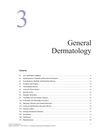Hair Loss with 5-Aminosalicylic Acid Enemas
March 1983
in “
Annals of Internal Medicine
”

TLDR 5-Aminosalicylic acid enemas may cause immediate hair root damage and hair loss.
In 1983, Kutty and associates reported hair loss after the use of 5-aminosalicylic acid enemas. The term "hair loss" was deemed too vague, as patients with severe inflammatory bowel disease are likely to develop telogen effluvium, a widespread loss of hair after major metabolic events. This disorder can be easily diagnosed as the lost hairs have the characteristic bulbs of telogen hairs, and are of equal diameter and color. In contrast, anagen hair loss with immediate damage to the hair root from 5-aminosalicylic acid enemas was also suggested.




